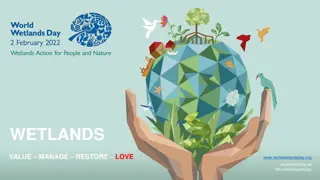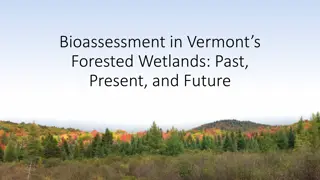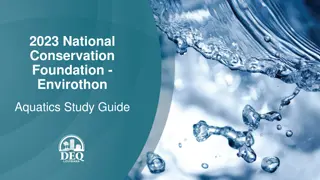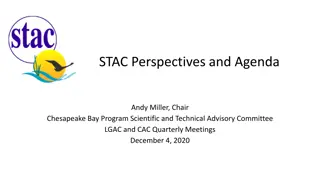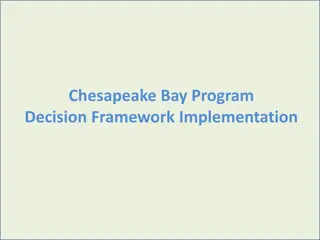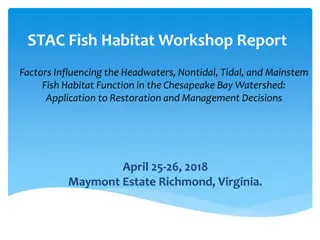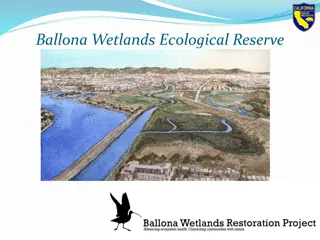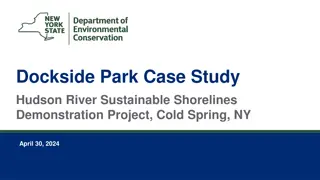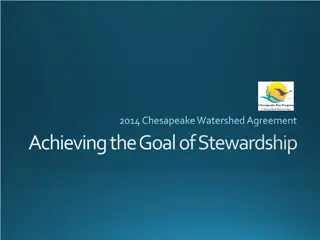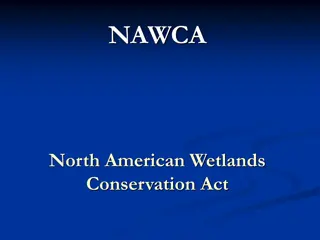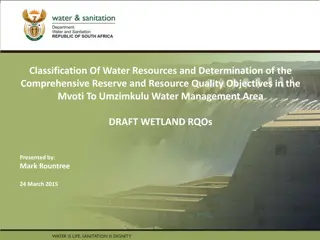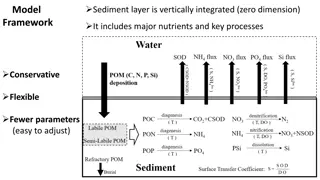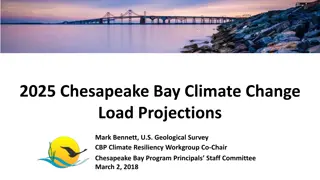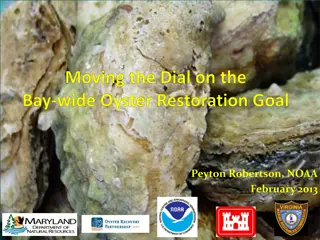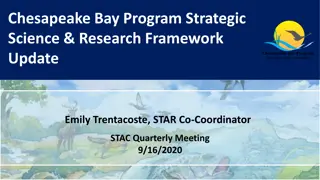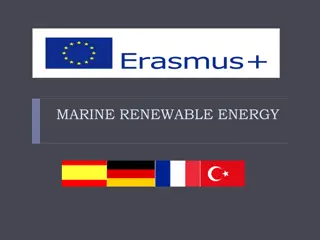Tidal Wetlands and Shorelines in the Chesapeake Bay: Environmental Impact and Conservation Efforts
Tidal wetlands and shorelines in the Chesapeake Bay face pressures from water, land, storms, upland development, shoreline modification, and sea-level rise. Collaborative efforts like the Fish Habitat Action Team aim to highlight the importance of these ecosystems for fisheries. Projects focus on synthesizing literature, identifying trends, and making recommendations for management. Studies show the benefits of natural shorelines and wetlands compared to hardened shorelines, emphasizing the need for conservation and restoration efforts.
Download Presentation

Please find below an Image/Link to download the presentation.
The content on the website is provided AS IS for your information and personal use only. It may not be sold, licensed, or shared on other websites without obtaining consent from the author. Download presentation by click this link. If you encounter any issues during the download, it is possible that the publisher has removed the file from their server.
E N D
Presentation Transcript
Tidal Wetlands and Shorelines in the Chesapeake Bay Kara Skipper Paige Hobaugh Photo: Will Parson
Wetlands experience pressures from the water and from the land More intense and frequent storms Upland development Shoreline modification Sea level rise
A Collaborative Effort The Fish Habitat Action Team has expressed interest in tidal estuarine wetlands due to the environmental and economic value they provide for commercial and recreational fisheries We see this as an opportunity to work collaboratively with your team to utilize your expertise in wetlands restoration to further spotlight the research in tidal estuarine wetlands. Photo: Will Parson
Project Scope 1. Synthesize relevant tidal wetlands literature and data 2. Identify important results and trends and form recommendations for Management Board in the form of a draft white paper 3. Present recommendations to CBP Management Board 4. Incorporate input from Management Board into final document and provide results and recommendations to targeted audiences
SERC Shoreline Hardening Study Highlights Natural Shorelines/Wetlands Higher invertebrate abundance, biomass and diversity are found in natural shorelines. Higher fish and crab abundance are associated with higher percentage wetlands Higher diversity and abundance of development- sensitive waterbirds are associated with higher percentage wetlands Hardened Shorelines/Bulkhead/Riprap Lower diversity and abundance of development- sensitive waterbirds associated with higher percentage bulkhead. Reduced SAV abundance with shoreline hardening. Decreased abundance of many fish and crabs as percentage of hardening increases Increased invasive Phragmites abundance found in areas with higher percentage of shoreline hardening
SERC Shoreline Land Use Study Highlights Upland Agricultural Land Use Increased invasive Phragmites abundance and decreased SAV abundance, density and diversity are found in watersheds dominated by agriculture. Decrease blue crabs and some bottom-oriented fish species in areas with higher percentage of agriculture Increased total Nitrogen, total Phosphorus and chlorophyll in areas with upland agricultural land use Upland Urban Land Use Increased total nitrogen and chlorophyll in area with upland urban land use. Decreased SAV abundance, density and diversity are less in watersheds dominated by agriculture and developed land. Increased invasive Phragmites abundance in watershed in developed watersheds.
Discussion: 1. What do you see as the most pressing issues concerning tidal wetlands at a local level? 2. Are there specific considerations/ recommendations that we should include in the white paper? 3. How would you like to be involved in this effort?
Thank you. Please contact us at the emails below if you have any questions. Kara Skipper Kara.skipper@noaa.gov Paige Hobaugh Hobaugh.paige@epa.gov


